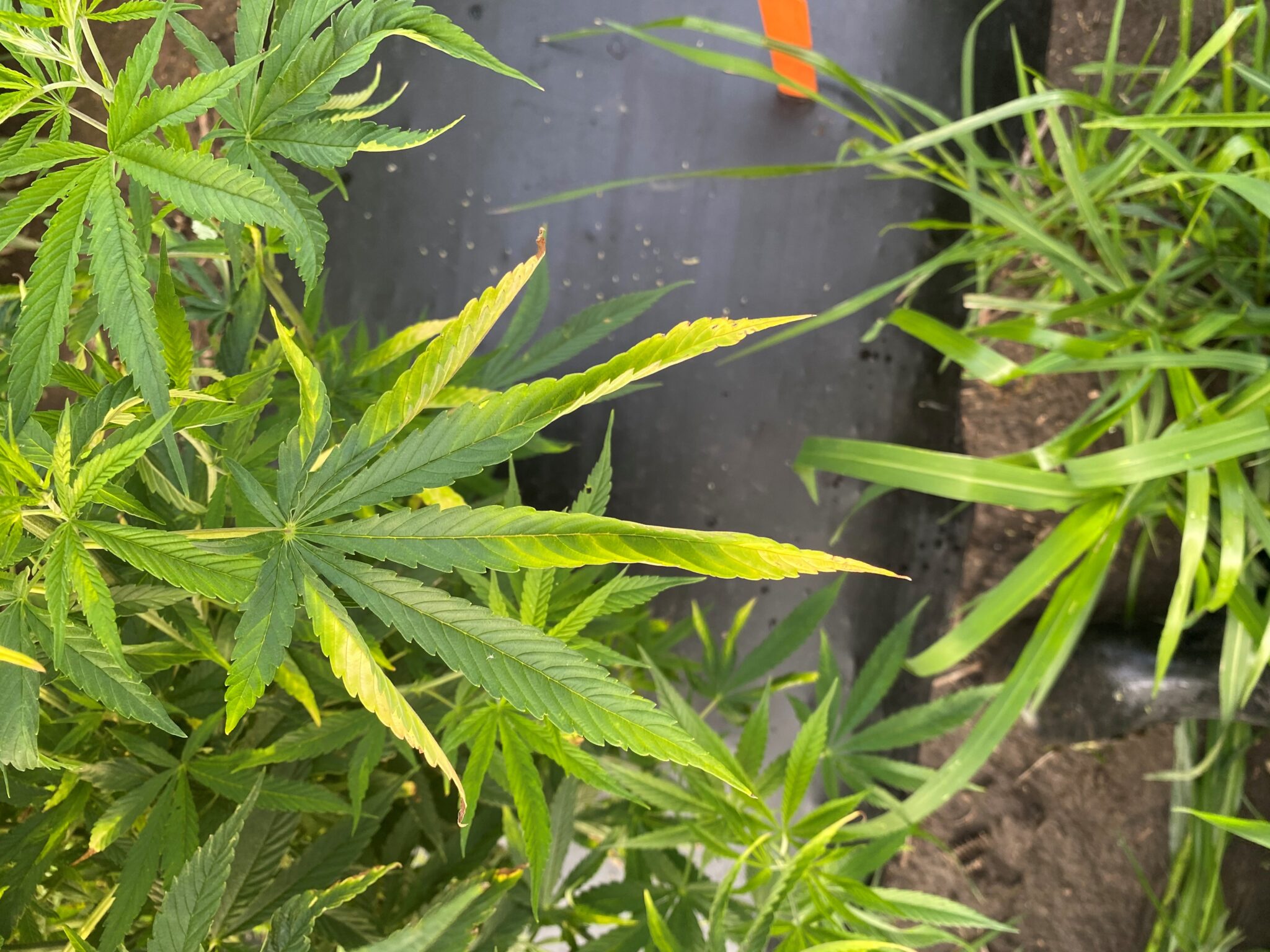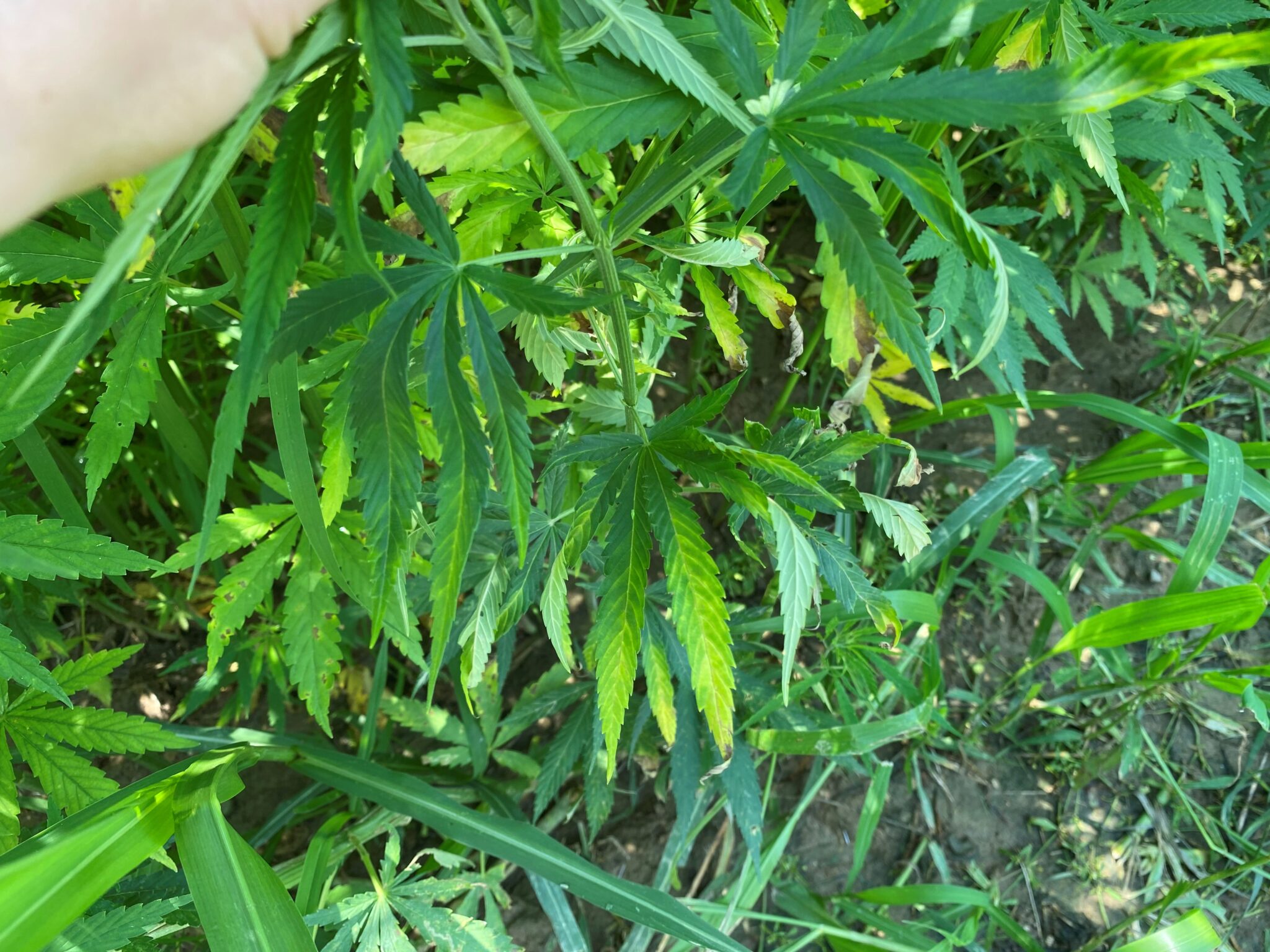Potato leafhopper (Empoasca fabae) is back on hemp. This migratory species can cause a lot of damage to many different crop species, including hemp. The damage on hemp displays the characteristic hopper burn. Leaf tips become yellow and scorched. As damage progresses, leaves curl and twist. Plants may be stunted. It is unclear how excessive hopper burn can impact hemp yields at this point. We do not have economic thresholds for this pest in hemp.
Some of the hemp in the cannabinoid cultivar trial at Meigs farm was showing symptoms of potato leafhopper. We observed both adults and nymphs on the plants. Certain plants showed more severe symptoms. Fiber hemp grown in Martinsville also had hopper burn. Most of the damage was on the edge of the field.
We do not know which cultivars are more or less susceptible to damage, however, we are collecting data on which plants are showing hopper burn. With all the excessive rainfall, plant stress could be a factor. Many of the cultivars in the trial were bred in western states. They may not be suited for this environment, which could increase plant stress as well.
It is important for hemp growers to look for the potato leafhopper nymphs and adults on plants. This can be done by visually inspecting the plants, but they can move quickly when disturbed. A sweep net can also be used to capture the pest.
Chemical control is one way to manage the pest in non-hemp crop systems. This is not an option for hemp producers. Growers should reduce plant stress when possible. Most of the hemp is already in the ground, so growers should think about how they can reduce hopper pressure next season. One way to reduce pest pressure is to avoid field sites that are close to alfalfa and other susceptible crops. The use of tolerant or resistant varieties may be an option in the future.




